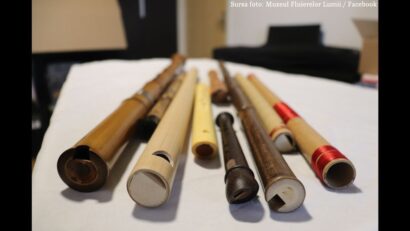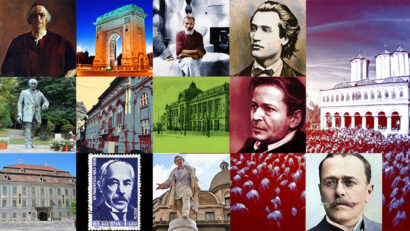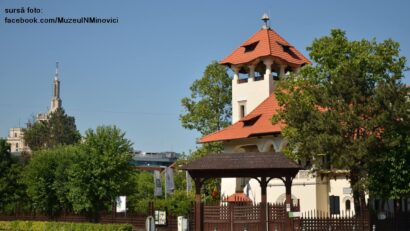The City of Sebeș
Called Melnbach in local German or Mühlbach, Sebeș today has approximately 26,000 inhabitants, of whom almost 80% are Romanian.
Ștefan Baciu, 07.01.2024, 14:00
The territory between the Mureș and Olt rivers and the Carpathian Mountains, started being inhabited, as of the 12th century, also by Germans colonized by the kings of Hungary. One of the seven seats or urban communities that had the right to be a judicial residence was the current city of Sebeș. Called Melnbach in local German or Mühlbach, Sebeș today has approximately 26,000 inhabitants, of whom almost 80% are Romanian. Traditionally, the city has always had more religious denominations, boasting Roman Catholic, Lutheran, Orthodox and Greek Catholic communities and churches.
We asked museographer Radu Totoianu from the Ioan Raica Municipal Museum in Sebeș about the history of the place. He described the beginnings of the settlement: Sebeș is mentioned in documents in 1245, shortly after the Mongol invasion. Priest Theodoric of Malenbach, the Latinized German name, asks Pope Innocent IV for the right to collect taxes from other neighboring parishes as well, as his parish had been greatly affected by the Mongol invasion. The Pope allows his request. This is actually the birth certificate of our city. It is an important city, it is the city that preserves the oldest privilege of surrounding itself with stone walls, a privilege given in 1387. It is surrounded by a fortification with an enclosure wall totaling over 1,800 meters, several towers that are still preserved, of which perhaps the most famous are the Student’s Tower or the Tailors’ Tower.
It is this fortification work that gives part of the town’s small reputation. The story of the monk Georg Captivus Septemcastrensis, who lived in the 15th -16th centuries and wrote the first treatise on the Turks, is important and it was summarized for us by Radu Totoianu: The tower was maintained and defended by the tailors’ guild and is related to the Turkish attack of 1438, when a Turkish army besiege the city. After resisting for several days, a truce is reached, the Turks are allowed to enter the city on condition that they did not cause any destruction. However, this did not happen. Capitulation was not something everyone liked, some citizens barricaded themselves in that Tailors Tower. Among them was a young student at the school within the Dominican monastery. The tower is set on fire, the vast majority of those in the tower die, but among the survivors is this young man, a 13-14-year-old child. He has the fate of many of the people of Sebeș. He is sold as a slave, and he is kept in captivity for 20 years. He is sold several times, eventually finding a more humane master who treats him more like a family member than a slave. The master frees him, he wanted very much to be freed, he told his master, to see his native places. He promised to come back, but he never did. He didn’t even go to Transylvania, he went to Cyprus, and then moved on to Italy. He arrives in Rome, joins the order of Dominican monks and writes a work considered the first European treatise on Orientalism which has seen over 25 editions. One of them, from 1511, was edited by the reformer of the German church, Martin Luther, who also prefaced it.
We have asked Radu Totoianu which are the buildings most representative for the small town
founded by the Transylvanian Germans.
Radu Totoianu: The most
important ecclesiastical building in the town is the Evangelical Church. The
first construction stages in the Roman architectural style kicked off after
1241. But after a while, the town, which enjoyed certain economic prosperity at
that time, wanted something more sumptuous. The Gothic style had already
appeared in Transylvania and parts of the church were built in this style.
Experts believe that if the church had been finished in this style, it would
have been the second largest in Transylvania after the Black Church in Brasov.
However, as the town numbered only 500 families at that time, they didn’t have
the financial strength to complete the church in the Gothic style. So, they
resorted to a compromise, a mixture of two styles. It is very beautiful though
as it also has elements of the Renaissance style.
Another architectural
landmark is the building housing the city museum.
Radu Totoianu: The most
important lay building in the Sebes town is the Zapolya House, which presently
houses the museum. It is related to the name of the Transylvanian ruler Ioan
Zapolya who eventually became king of Hungary after the death of Vladislav 2nd
in battle. However, the move failed to satisfy everybody and a part of the
Hungarians came with another candidate, Ferdinand of Habsburg, of the Austrian
royal family. A civil war broke out and king Zapolya and his army withdrew to
Transylvania, conquered Sebes and established his headquarters in this
building, which is presently housing the museum. He even died in this building
around 1540.
Although small, the town
of Sebes played a major role in the history of Transylvania. Its well defined
personality has been preserved along the centuries.
(LS, bill)





























